It’s safe to say most people are familiar with a casket and its purpose. Burial vaults, on the other hand, may be a different story. A burial vault is a sealed and lined protective container designed to keep water, dirt, and other graveside elements from entering the casket space.
A burial vault’s construction prevents the weight of the earth and cemetery equipment from collapsing the grave and casket. Not only does a burial vault secure the investment made in the form of a casket, but it also prevents cemetery grounds from becoming uneven which can be dangerous for visitors and damaging to grave markers.
Considering the fact that burial vaults are intended to be interred in the ground indefinitely, some uncertainty may exist as to their effectiveness. Trigard believes families deserve to have the peace of mind that their loved one’s final resting place is undisturbed. We decided to demonstrate our burial vaults’ strength and ability to protect a casket.
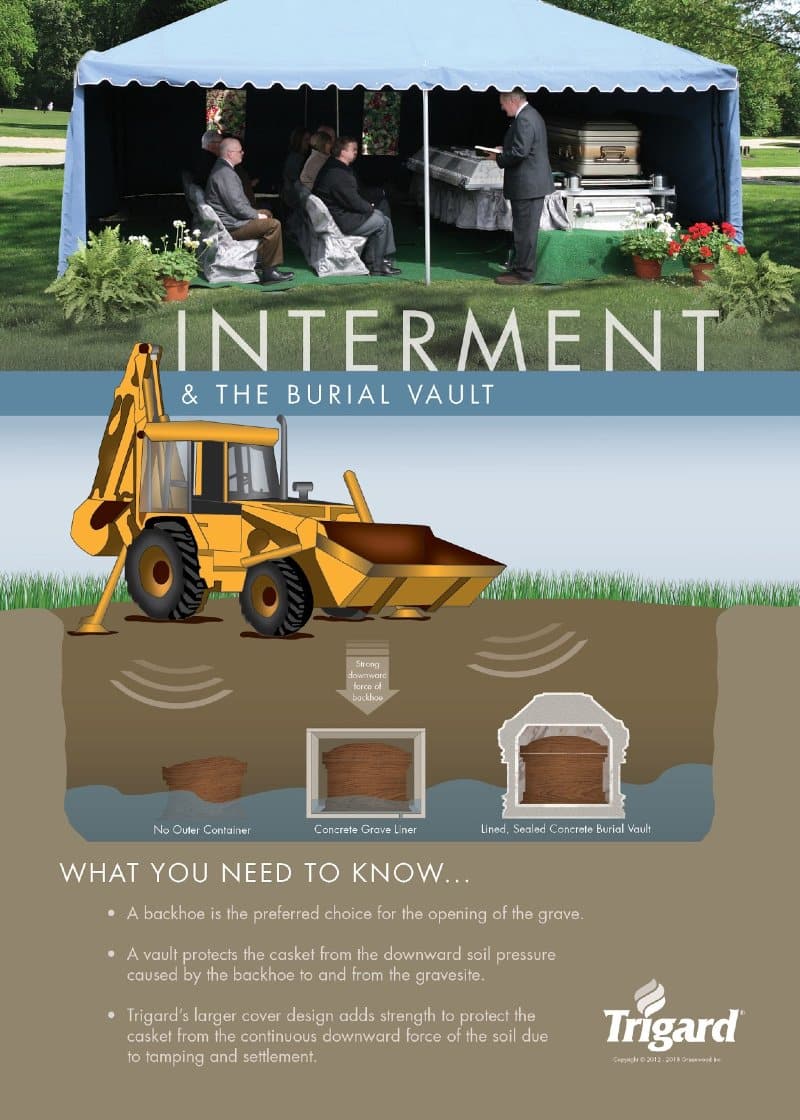
Step 1: Burial of the Vault and Casket
On June 12, 2012, we placed an empty casket in a Trigard white marble Aegean® burial vault. The lined, sealed, vault was placed in a grave at Washington Park East Cemetery in Indianapolis, Indiana. The grave was dug, prepared, and backfilled like any other grave in the cemetery.
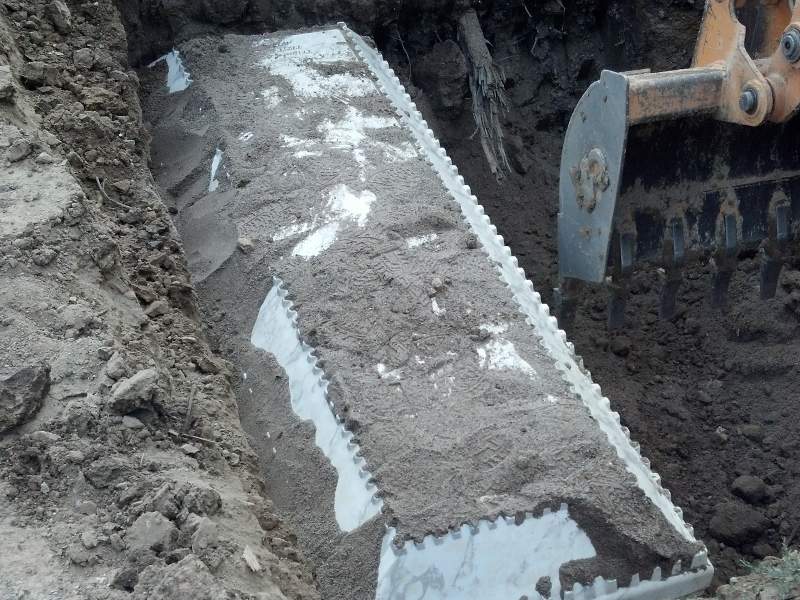
Step 2: Disinterment of the Vault
On August 20, 2012, we returned to disinter the vault. The grave site had not settled indicating the vault had successfully withstood the extreme weight of the earth. There was no damage to the exterior of the vault confirming that the vault’s integrity had not been compromised.
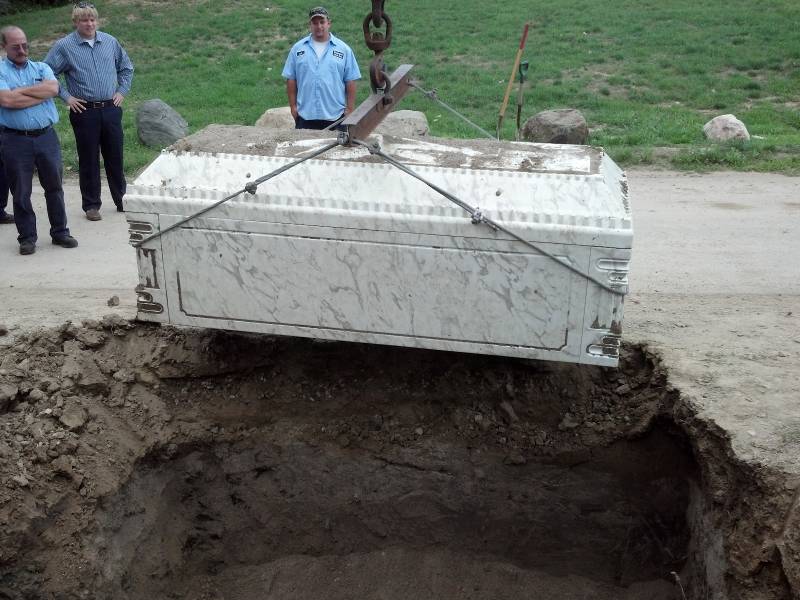
Step 3: Opening of the Vault
Upon removing the casket from the grave, we proceeded to open the burial vault. The vault’s butyl tape, the synthetic rubber adhesive that provides a secure seal between the vault base and lid, was still intact indicating the seal was airtight. The butyl tape had to be stretched far enough to eventually break; enabling the vault to be opened.
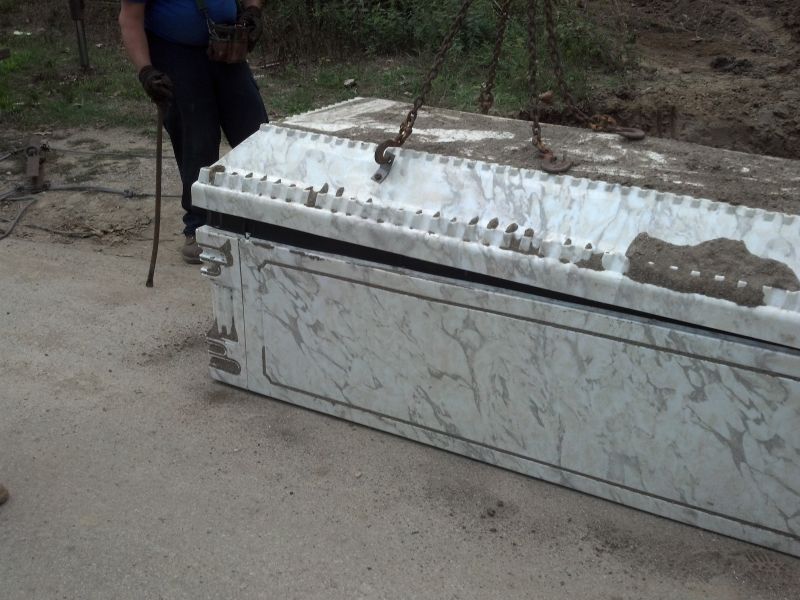
Step 4: Opening of the Casket
The casket was then removed from the burial vault. Once opened, a clean, dry burial vault was revealed. The casket’s exterior was undamaged and free of any graveside components. The Aegean® burial vault had successfully exhibited its effectiveness.
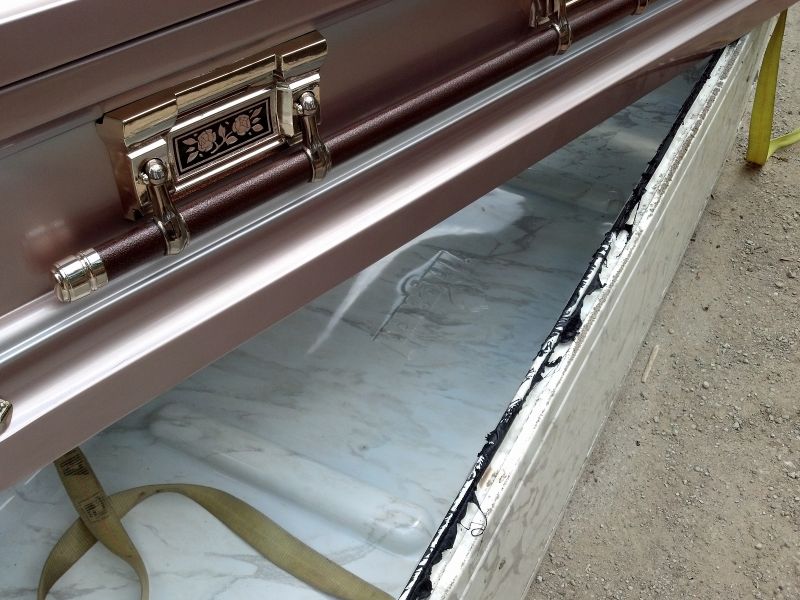
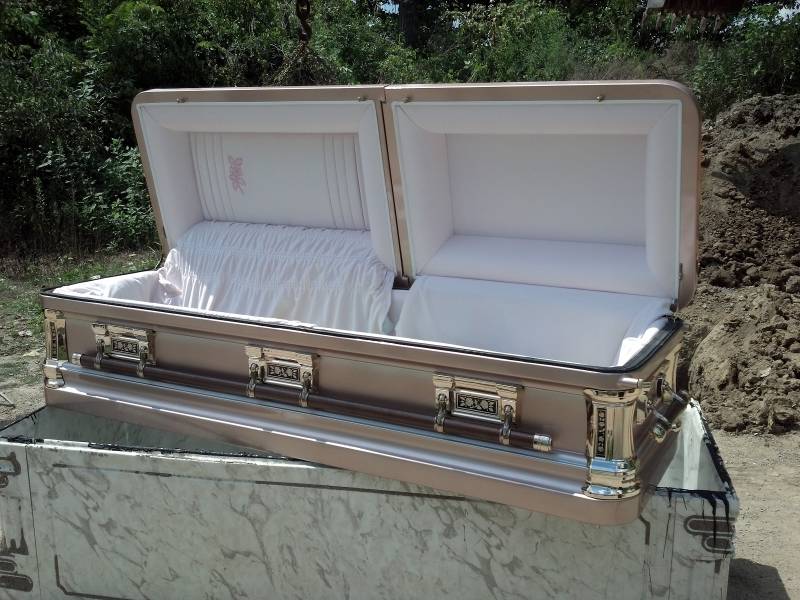
Trigard Strong
We were excited to see the effectiveness of a Trigard, lined sealed vault in action. We also realize 2 months is not forever. That is why Trigard’s burial vaults are warranted up to 80 years. They exceed the National Concrete Burial Vault Association guidelines for strength.
In order to further confirm the durability of a Trigard vault, we recently partnered with WJE laboratory to verify our burial vault’s minimum requirement of withstanding a static load of 5,000 pounds per square foot was being met. The Aegean® burial vault used in the testing exceeded the goal and handled a maximum load of 13,800 pounds. These findings verified our vaults can support the weight of a backhoe and the dirt it deposits on a grave.
Many design features contribute to Trigard burial vaults’ abilities to withstand the stresses and environmental factors in which all vaults are exposed.
- Tongue in groove seal with butyl tape that secures the vault lid to the base
- Arched cover design to help distribute the weight of the soil to the vault’s perimeter
- Vacuum formed, heavy polymer liner to prevent concrete breakage
- Metal interior wrap and cover for added protection
While all burial vaults and urn vaults are intended to have the same purpose, Trigard vaults are proven to be durable and air tight: ensuring the casket remains intact and free of underground elements. Thus, families can rest assured their loved one is protected.

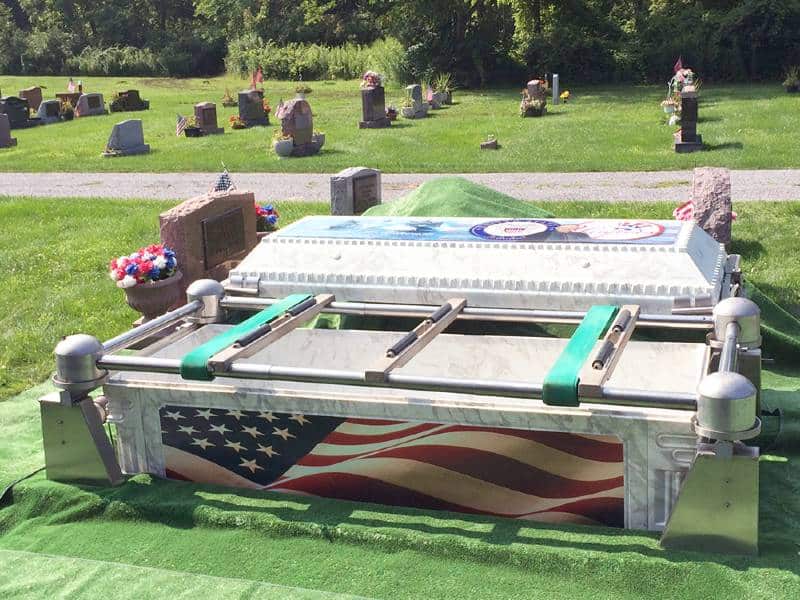






One Response
Hi Gary, I wish there were a simple, straight forward answer to this question, but unfortunately there are many different factors at play which cause varying results. I can tell you from our experience, as long as the vault is set and sealed correctly it can preserve remains for hundreds of years. I honestly cannot speak to what will happen in 500-1,000 years. There is no valve- even if everything is sealed perfectly, gases will find a way to escape.
I don’t want to sway you either way on this. If you are having doubts about traditional burial, cremation is also a great option. I hope this helps!